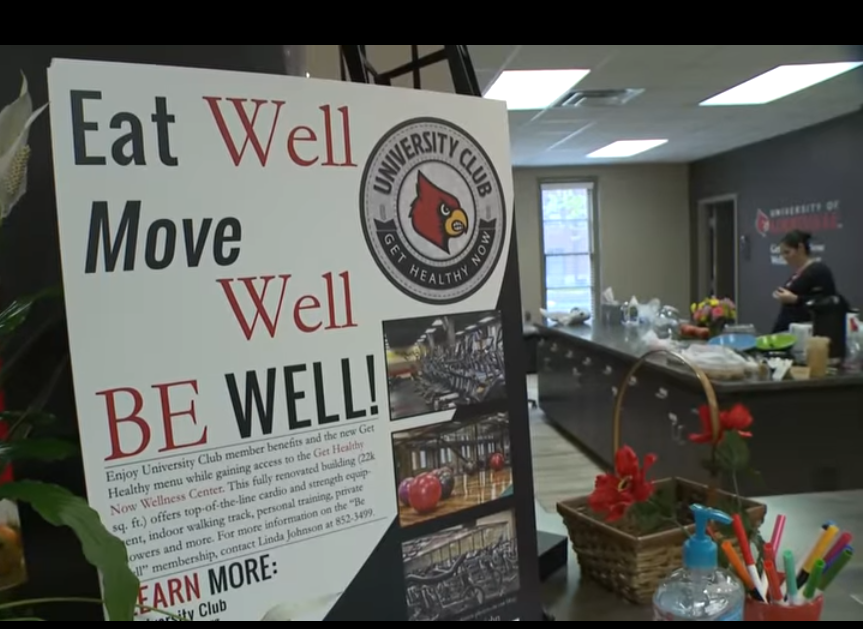Faced with surging employee health care costs, many employers have embraced the concept of wellness as a way to improve the overall health of their workers and reduce medical claims. Unfortunately, too many have simply doled out fitness trackers, hoping for the best.
Having worked with hundreds of organizations over the years on behalf of HealthFitness, I have seen the wellness trend affect employers of all types. And while technologies like fitness trackers and apps certainly have their place, and can be effective tools, one-off efforts like these usually do not reap long-term cost savings or improved employee engagement and productivity. When it comes to employee health and well-being, in my view, beginning with the end in mind taking the strategic, comprehensive view is usually the best approach.
This way of thinking has proved incredibly beneficial for our client, the University of Louisville (UofL). With an employee health and well-being program that dates back to the early 2000s, the university is a model of how to achieve real results and health care cost savings in an age of quick fixes. Let’s take a deeper dive.
All around health is the emphasis
 At UofL, which employs nearly 7,000 employees across multiple campuses and shift schedules, health is more than just “physical.” Today, the university also emphasizes mental, emotional, financial and physical health and well-being, giving its employees the opportunity to take charge of their own health, while providing crucial assistance and training along the way.
At UofL, which employs nearly 7,000 employees across multiple campuses and shift schedules, health is more than just “physical.” Today, the university also emphasizes mental, emotional, financial and physical health and well-being, giving its employees the opportunity to take charge of their own health, while providing crucial assistance and training along the way.
The university ascribes to a “well-being by well-doing” mentality, believing that health of all kinds is something we must cultivate in ourselves and in those around us. By adopting this mindset and investing in well-being by well-doing over the last decade, the university has achieved more than $4.3 million in healthcare cost savings and shifted its employee health culture from reactionary to preventive.
A wake-up call
But it wasn’t always this way. In the early 2000s, the university was faced with skyrocketing employee health care costs and turned to a self-insured plan in an attempt to cut costs. When the university realized the real cause of the high costs was primarily due to employees’ poor health habits and preventable health risks, director of health and disease management, Patricia Benson, worked with her team to create “Get Healthy Now,” a voluntary, incentive-based well-being program that focused on the entire person’s health and wellbeing.
From reactionary to preventive
Today, the Get Healthy Now program features two main hubs for well-being activities: an on-site well-being center of 22,000 square feet and an online tool providing employees with anytime access to health management support. This support includes a range of fitness classes, personal coaching, health and fitness assessments, smoking cessation classes, and workshops focused on legal education, as well as support for mental, social and financial health. The aim? To help employees prevent and manage health risks of all kinds before they get out of hand, and to provide resources and support so employees can stay committed to their health goals.
A big priority within the Get Healthy Now program is easy access for employees. The university makes the on-site well-being center free for employees, $10/month for spouses, and provides shuttles to the center throughout campus. The university also partners with local organizations to round out its offerings and make the healthy choice the easy choice. Through these partnerships, the university promotes community-sponsored agriculture on campus, offers health support groups, provides disease management education, bicycle check-out programs and bike-to-work safety classes.
The ROI: Financial and a healthier workforce
With leadership on board since day one, the university has been able to make incredible strides in its healthcare cost savings and reduced health risks. Here’s a small piece of what Get Healthy Now has accomplished:
- Average number of health risks among employees has decreased from 5 or more health risks to 0-3 risks.
- Healthcare claims costs increased by 2.5% for participants in the Get Healthy Now program, compared to 19.5% increase for non-participants.
- Program participants experience an average healthcare claims savings of $1,300, resulting in an estimated $4.3 million in reduced claims spending for the university.
- Every $1 invested in the program generates $7 in healthcare cost savings.
- 75% of the workforce participates.
The University of Louisville wants its employees to feel the benefits of the program’s success in every way possible. “We all shoulder the burden of disease and share in the wealth of good health,” says Benson, director of the Get Healthy Now program. That’s why the university began using its healthcare cost savings to fund a “living wage” goal in 2014, which increased the minimum salary for employees to $11 per hour.
“There are so many instances where supporting the well-being of employees supports the well-being of the organization,” says Benson. “The message we wanted our campus community to embrace is that health is a life well-lived, and it’s in you. We are helping our employees define what that means for themselves, and then we provide the resources and tools to help them achieve those well-being goals.”
At the University of Louisville, health is a social contract by which everyone has something to gain. Employees have skin in the game, and they’re eager to invest in themselves and encourage their colleagues to do the same, so that everyone can achieve better health and well-being over the long haul.
